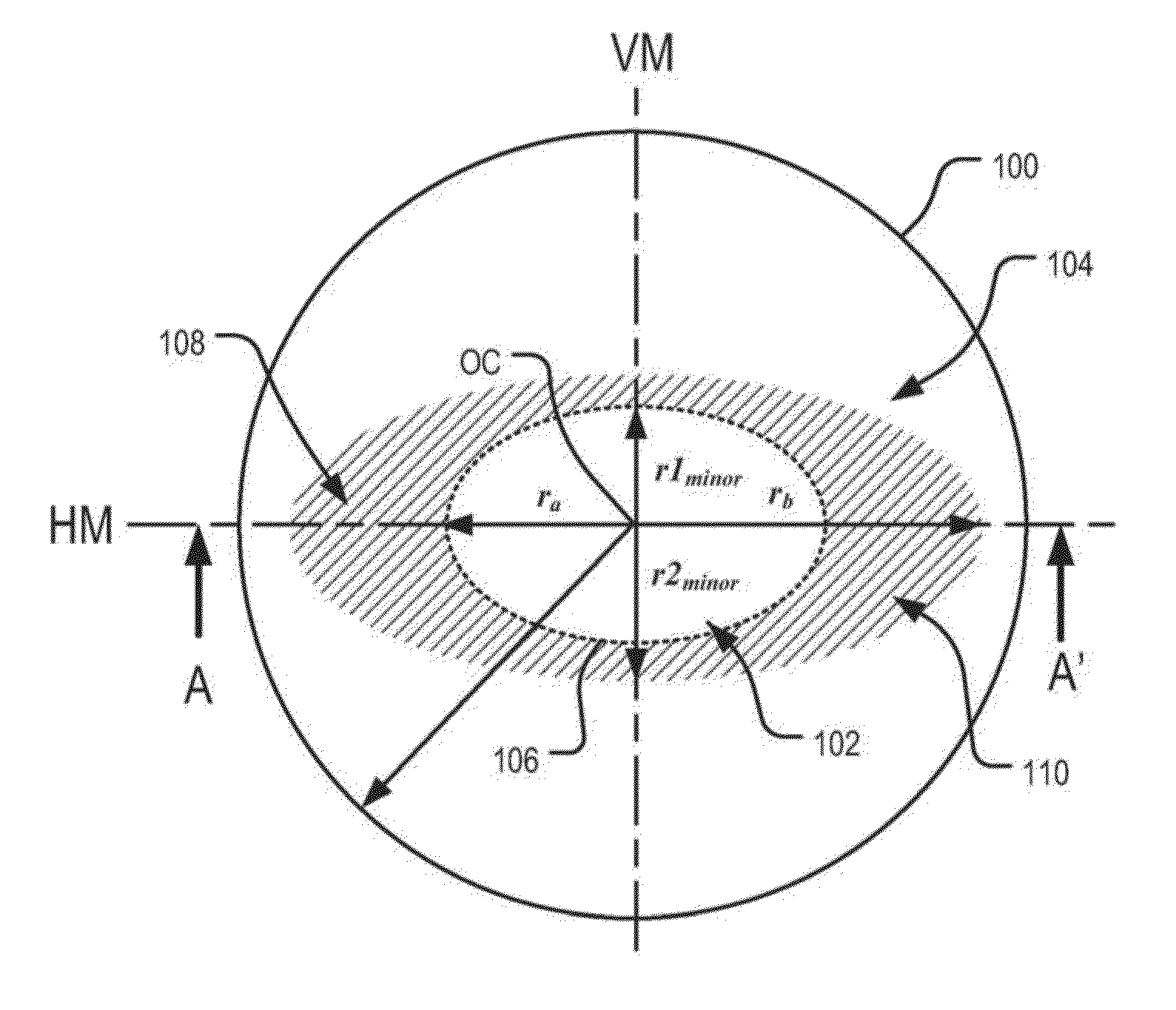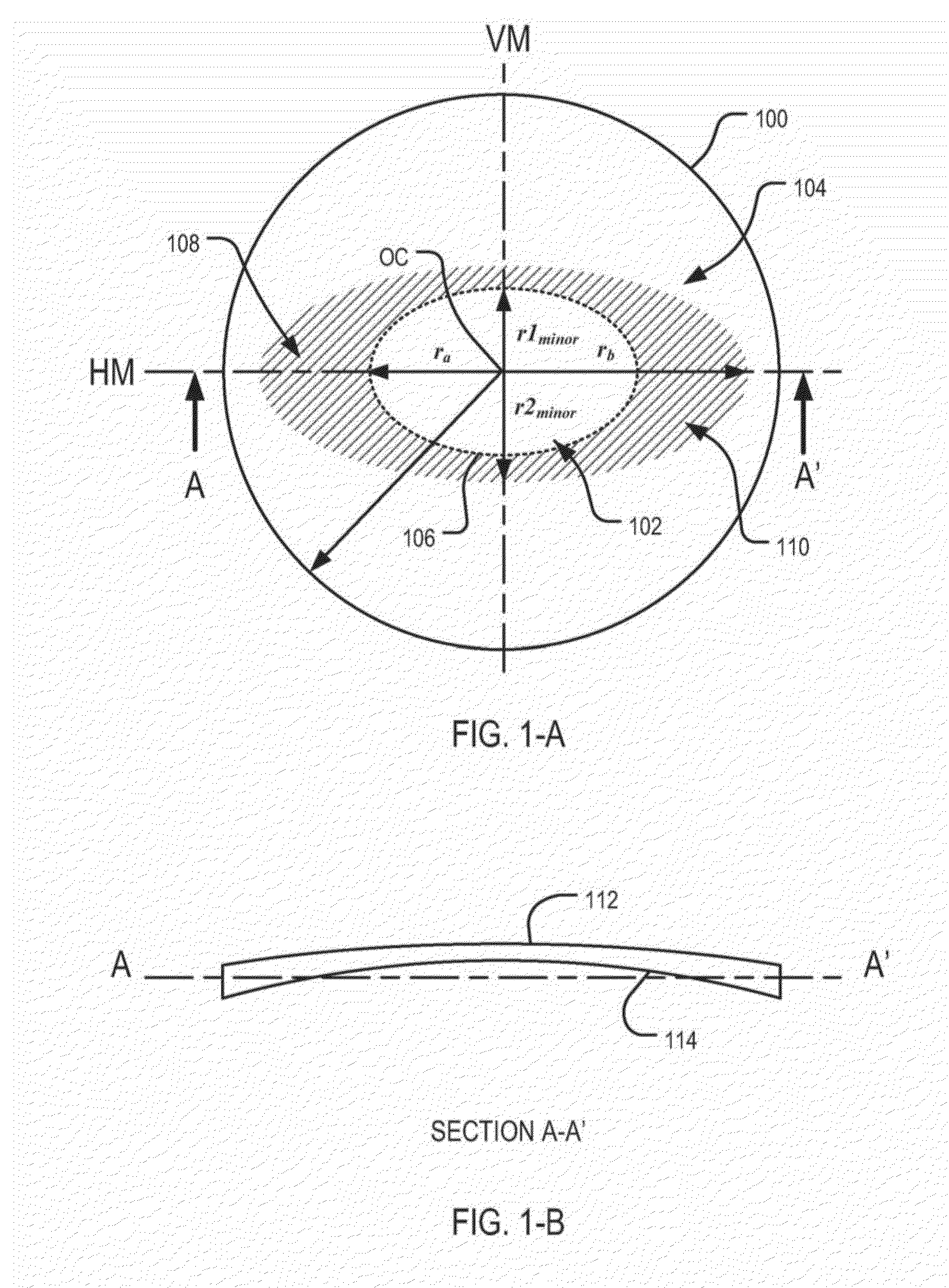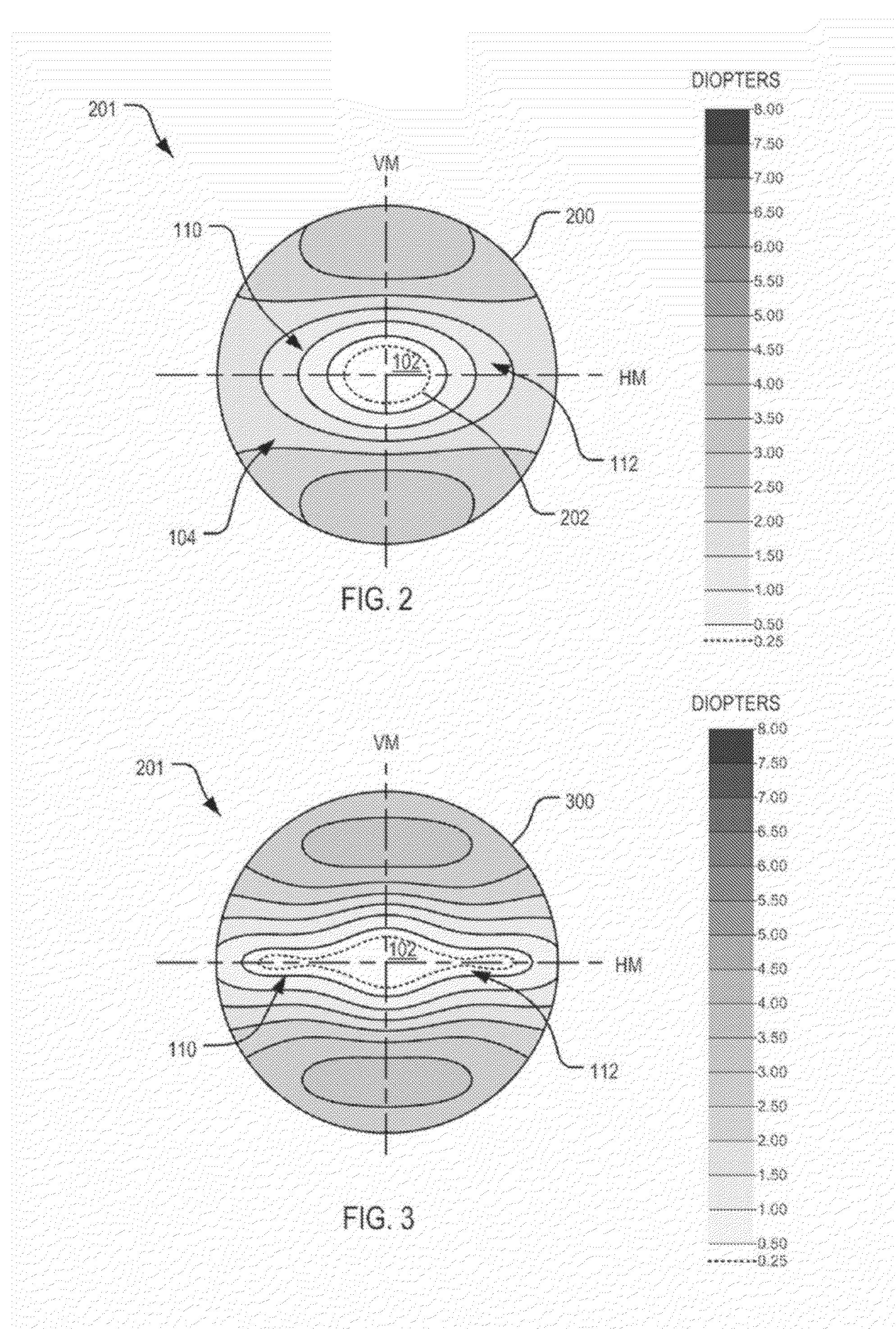Ophthalmic lens element
a technology of ophthalmology and lens elements, applied in the field of ophthalmology lens elements, can solve the problems of hyperopic foveal blur, eye cannot properly focus near objects on the retina, and the eye cannot properly focus distant objects on the retina
- Summary
- Abstract
- Description
- Claims
- Application Information
AI Technical Summary
Benefits of technology
Problems solved by technology
Method used
Image
Examples
example 2
[0165]FIG. 7 illustrates a contour diagram 700 of surface mean power for another example of an ophthalmic lens element 701 according to an embodiment of the present invention. FIG. 8 illustrates a contour diagram 800 of surface astigmatism for the lens element 701.
[0166]Lens element 701 is similar to lens element 201 except that lens element 701 provides a larger central region 102 with lower astigmatism (that is, the region bounded by the 0.25 D contour 202 of mean surface power), but provides a distribution of astigmatism which is higher along the horizontal meridian (HM), as is evident in FIG. 8, but is still relatively low on the horizontal meridian (HM) in the central region and the progressive zones.
[0167]In this example, the lens element 701 includes a front surface having the same mean crown curvature as the lens 201 of Example 1, but the mean surface add power reaches 0.25 D only at the radius of 14 mm from the optical centre along the horizontal meridian, compared to 10 mm...
example 3
[0176]FIG. 12 illustrates a contour diagram 1200 of surface mean addition power for another example of an ophthalmic lens element 1201 according to an embodiment of the present invention. FIG. 13 illustrates a contour diagram 1300 of surface astigmatism for the lens element 1201. In this example, the lens element 1201 includes a front surface having a higher mean crown curvature (3.53 D) than the lens element 201 of Example 1.
[0177]Lens element 1201 also provides a central region 102 that has been modified with respect to that of the lens element 201 of Example 1. In particular, the central region 102 of lens element 1201 provides an inset viewing area which is substantially free of astigmatism, but that does not have any addition power. The inset area 1202 is shown in FIG. 12 and is more clearly depicted in FIG. 13.
[0178]The front surface of the lens element 1201 uses the same mathematical description as Example 1, but with the parameter values listed in table 3. However, in this e...
example 4
[0184]FIG. 17 illustrates a contour diagram 1700 of surface mean addition power for another example of an ophthalmic lens element 1701 according to an embodiment of the present invention. FIG. 18 illustrates a contour diagram 1800 of surface astigmatism for the lens element 701.
[0185]As evident from FIG. 17 to FIG. 21, lens element 1701 is similar to lens element 1201 in that it also includes an inset viewing area 1202 which is substantially free of astigmatism, but that does not have any addition power. The inset area 1202 is shown in FIG. 17 and is more clearly depicted in FIG. 18.
[0186]The front surface of the lens element 1701 uses the same mathematical description as Example 1, but with the parameter values listed in table 4.
[0187]
TABLE 4ParameterValueR0136.5mmT0Rl176.67mmM0N0.0000013P3.75A1.0B1.35
PUM
 Login to View More
Login to View More Abstract
Description
Claims
Application Information
 Login to View More
Login to View More - R&D
- Intellectual Property
- Life Sciences
- Materials
- Tech Scout
- Unparalleled Data Quality
- Higher Quality Content
- 60% Fewer Hallucinations
Browse by: Latest US Patents, China's latest patents, Technical Efficacy Thesaurus, Application Domain, Technology Topic, Popular Technical Reports.
© 2025 PatSnap. All rights reserved.Legal|Privacy policy|Modern Slavery Act Transparency Statement|Sitemap|About US| Contact US: help@patsnap.com



